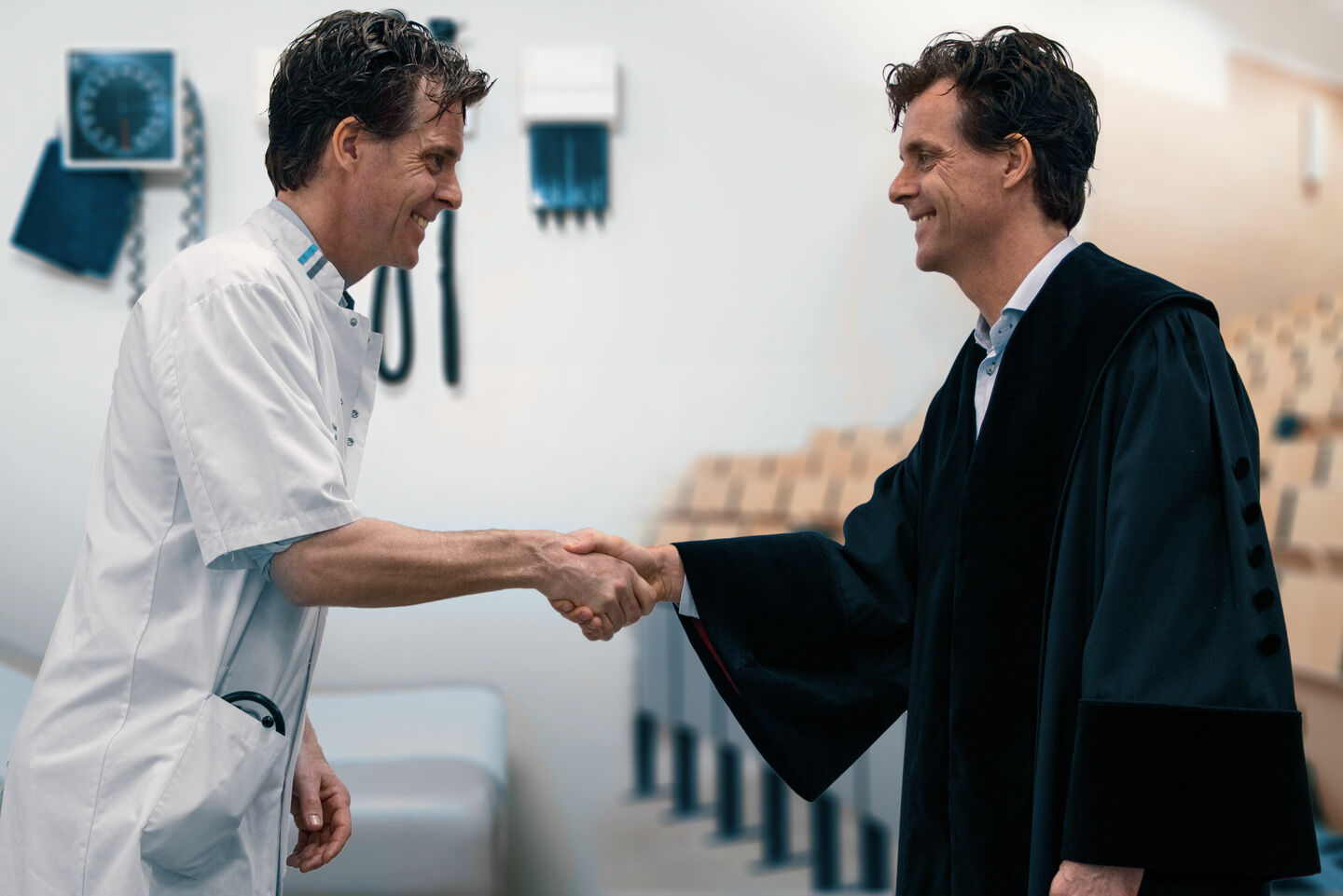
Professor-doctor: a white coat on Wednesday, a toga on Thursday
Not many people wake up in the morning and face the following question: what shall I wear today, the white coat or the toga? Some TU/e professors do get to make that choice. They spend most of their working week as doctors in a nearby hospital and come to TU/e once a week – or more often – for research and consultation. It is a special collaboration, because doctors and engineers generally have very different DNA.
And different methods. Doctors mostly have a one to one relationship with their patients and trust their feeling that something is wrong, whereas engineers are systems thinkers who leave nothing to chance. At least, that’s what the professor-doctors say. Cursor spoke to six of them to find out how the collaboration started, how they like it, and what the results are.
Two of these six doctors were asked by TU/e to become full professor when the Department of Biomedical Engineering was founded in 2000. These are gynecologist Guid Oei and cardiovascular surgeon Bas de Mol. The latter had approached TU Delft on his own initiative several years earlier to find a technical solution to his practical problem.
Clinical chemist Volkher Scharnhorst was asked to take over the position of his retiring professor. Cardiovascular surgeon Marc van Sambeek has been wearing a toga since 2017 and cardiologist Lukas Dekker was fitted with one only recently. Neuropsychologist Bert Aldenkamp was appointed full professor when TU/e needed a leader for a program within strategic area Health.
The professors do not spend much time in a classroom. They don’t teach every quartile. Instead, they focus on supervising PhD students and graduates.
All of them have something to say about e/MTIC. This Eindhoven MedTech Innovation Center was founded in 2015 to create a more substantial and stable collaboration between the Catharina Hospital, Máxima Medical Center, Kempenhaeghe Epilepsy and Sleep Center, Philips and TU/e.
e/MTIC is a large-scale research operation in which several work groups focus on setting up a data collection system and attracting funds, as well as on medical law and ethics, and marketing. There are three clinical groups: for cardiovascular care, perinatal care and sleep care. This collaboration between engineers, a major electronics company and important healthcare institutions attracts international attention, also among large subsidy providers.
Meet six remarkable men below.
Guid Oei works on an artificial womb
Guid Oei/ full professor of Fundamental Perinatology in the Signal Processing Systems group/ gynecologist-perinatologist at the Máxima Medical Center (MMC)
A general overview of Guid Oei’s career path
In addition to his clinical work as a gynecologist, Guid Oei (57) focusses on two other research topics: fetal monitoring and medical simulation. He took his first steps towards this research in 1996. Oei became a gynecologist in the MMC in Veldhoven that year. The hospital has a neonatal intensive care for sick infants since 1989.
The law states that the Netherlands has to have ten centers for special perinatal care, and Oei specialized in this high-risk obstetrics. “The MMC accommodates women who give birth at 32 weeks of pregnancy or sooner. This means intensive care not just for the unborn child, but for the mother as well. After completing a fellowship in Adelaide, Australia, I proposed to set up an IC in Veldhoven.” This became the so-called Obstetric High Care Unit (OHC), the first of its kind in the Netherlands and by now mandatory for all perinatal centers.
When the Department of Biomedical Engineering was being set up, Oei already met with clinical physicists (including Pieter Wijn, full professor at the Department of Applied Physics) every week and served as a gynecology instructor at MMC. Jan Janssen, dean of the Biomedical Engineering department at the time, asked the then 37-year-old Oei to become a part-time professor. He has supervised about forty PhD students since then, half of whom have already defended their thesis. Oei initiated e/MTIC in 2014, in collaboration with several others.
His most recent plan is to develop an artificial womb. This would make it possible for babies born after 24 weeks to continue to develop using an artificial kidney and an artificial lung.
Physicists and doctors speak different languages
“In the late nineties we organized weekly meetings between physicists, pediatricians and gynecologists, and it took us a while getting used to each other. We wanted to improve the existing device to monitor heart and contractions, and use an electrocardiogram to monitor the fetus. Our main question was: what is the best moment to allow this baby to be born? In case of a complicated pregnancy, you don’t want the delivery to start a day too soon or too late. But engineers don’t want to leave anything to chance while doctors know from experience that no one patient is the same, and that you have to take into account a certain degree of uncertainty. It took two years before the group, which consisted of five to ten people, started to understand each other’s language and needed few words and no jargon.” This led to the chairof Fundamental Perinatology in 2003.
Inspired by the neighbor
“My neighbor happens to be a pilot for KLM. He told me over a cup of coffee that he and his colleagues are obliged to take a test every six months following the plane crash on Tenerife in 1977. A flight simulator doesn’t just recreate technical matters but the operational structure in the cockpit as well. It’s about clear communication. And that is what’s important to us as well!
I figured we should organize team simulations with a life-size dummy that serves as a birthing simulator on which we could simulate the electrocardiogram for both the fetus and the mother. We decided to test our team’s cooperation and communication skills by simulating a crisis situation featuring a complication with the umbilical cord or a shoulder dystocia. Two PhD students, Joost van de Ven and Annemarie Fransen, conducted a study to see whether obligatory simulation is useful, whether it helps reduce harm to new-born babies and whether it is cost-effective.”
In 2009, the MMC and TU/e initiated training and research center Medsim. “Obstetrics teams from across the Netherlands test their skills here and a simulation center was set up in Uganda in 2014. A total of fourteen centers will possibly be set up there. More than a thousand babies and hundreds of mothers die in the capital Kampala each year, that number can be reduced by fifty percent.”
Bas de Mol feels like a technology salesman
Bas de Mol / part-time full professor of Cardiovascular Biomechanics & Devices at the Department of Biomedical Engineering at TU/e until 2014 / cardiovascular surgeon at the Academic Medical Center (AMC) in Amsterdam until 2018/ co-founder of the LifeTec Group
From the tropics to the Eindhoven central station area
He refers to himself as a ‘tropical doctor’ first, because that is how his career started. Bas de Mol (66) did not become an ir. (engineer) after that, but he did become a prof. dr. mr. dr. “After obtaining my degree in medicine, I became a doctor on the Seychelles and in Ghana and Niger as part of an alternative military service. When I came back to the Netherlands, I practically stumbled into the cardiac surgery department of the AMC. I came into contact with engineers through TU Delft, and when TU/e set up the Department of Biomedical Engineering in 2000, I was asked to hold the Research and Development of Cardiovascular Devices chair. There I could apply technology in the field of cardiovascular medicine.”
In 2012, De Mol and a few others founded LTG, LifeTec Group, a company that provides clients with the research facilities to test products and treatments, such as drug-delivery stents in a special bioreactor. The company is located at the Kennedyplein, at walking distance from TU/e.
Failing heart valves
The quality of the things you use is important, De Mol believes, especially for a doctor. “It turned out that the heart valves I placed broke down. That happened at least two thousand times worldwide in the nineties. I started to do research on those failing heart valves at TU Delft, assisted by a team of people who knew about materials, alloys, imaging and determining strength. I also had a legal background and we discussed the risks of the valves. It was about the safety and reliability of medical technology.”
As full professor, De Mol operated at the interface between robotics, materials and signals until his retirement in 2014. He still describes his function at LTG as that of “a salesman of technology, a representative of BMT, and an agent in computing and materials.”
Eyeopener
The core of the matter, De Mol believes, is that there is order in the operating room. “My experience in the tropics taught me that organization is more important than anything else. When a tsunami sweeps away your clinic, you’re helpless without methodical thinking. Without engineering, one could say, because its purpose is to make sure that the technical parts, constructions and systems function. I had to take care of everything. The telephone didn’t work, patient files were lost, et cetera. I solved problems by improvising.” The way engineers think outside of the box is highly appreciated by De Mol.
Special PhD students
Dennis van Veghel will take his PhD in cooperation with the Catharina Hospital in September of this year. His supervisor De Mol: “Dennis shows that organizing your processes is the most important thing and that it should be done by a sensible doctor. This answers the question I asked myself thirty years ago. His thesis focusses less on technology but emphasizes the importance of a well-considered system of communication and data usage. To me, that’s more important than a PhD student who shows something that works on a rabbit and possibly on five patients as well.”
Marc van Sambeek thinks patient care should improve
Marc van Sambeek / vascular surgeon at the Catharina Hospital/ full professor of Cardiovascular Biomechanics at the Department of Biomedical Engineering at TU/e
Combination of forces
When Marc van Sambeek started as a vascular surgeon at the Catharina Hospital in 2008 he had already spent twenty years at the Erasmus Medical Center Rotterdam, where his last position was head of vascular surgery. From 2011 onward contacts with TU/e became more frequent. “It started with sharing ideas about a project, or advising a PhD student. Frans van de Vosse’s Cardiovascular Biomechanics Group at BMT was doing research on the plaque from carotid arteries of patients in an ongoing project.”
Van Sambeek also started to work more closely with Richard Lopata, associate professor at TU/e. “His technical knowledge and my clinical experience brought about a force that enabled us to conduct high-quality research on clinical questions that hadn’t been sufficiently answered up to that point. What is the maximum distention of an artery before it ruptures, prior to treatment? The combination of clinical studies and mathematical models creates many possibilities. We don’t just look at the diameter now, but at the tension in the walls and the distortion of arteries using advanced imaging, such as 3D ultrasound.”
Legacy
“The collaboration between hospital and university made it possible for us to apply for funding from the Lijf en Leden Foundation, an organization for financial support of medical research that I knew from my days at the Erasmus hospital in Rotterdam. Later on, we received extra money from the TU/e Impuls program, which paid for several PhD's. My motivation is to improve the quality of patient care. The best we have right now is evidence-based medicine, but that’s not good enough as far as I’m concerned. We can do better.”
Toga and chalk
Van Sambeek’s appointment as part-time professor in the Department of Biomedical Engineering didn’t change his work much. “If anything, it consolidated the agreements we had made.” And maybe he supervised a few more PhD students. The vascular surgeon doesn’t teach very often. “Together with Nico Pijls, I teach the master’s course Pathophysiology of the cardiovascular system to BMT, Electrical Engineering, and Industrial Design students. I also give guest lectures now and then, but I spend more time supervising graduate students. I wear a toga five to ten times a year.”
Special PhD students
Van Sambeek supervises six PhD students. Emiel van Disseldorp is very special to him. “Emiel initiated a study that uses 3D ultrasound to measure the stiffness and tension in the walls of arteries. Although the TU/e laboratories and hospitals often have the same equipment, I think it’s important that PhD’s should go out into the clinic. That is what Emiel has done, and that collaboration has opened new paths of research.”
Bert Aldenkamp uses technology to look inside the brain
Bert Aldenkamp / clinical neuropsychologist/ full professor of Epilepsy and Neuropsychology at the Maastricht University Medical Center/ professor of Imaging & Cognition in Epilepsy at the TU/e Department of Electrical Engineering/ Head of the Department of Behavioral Research at Kempenhaeghe Epilepsy and Sleep Center
Spinal cord
"Patient care is in my spinal marrow,” Bert Aldenkamp says, “that is why I come to TU/e on a fixed day each week, otherwise patient care would always be a priority.” He completed his studies in Groningen in 1979 and has always focused on neurocognitive problems. “I want to look inside the brain.”
Since Aldenkamp’s appointment at Maastricht University Medical Center and Kempenhaeghe in 1995, MRI technique had made a considerable advance, leading to insight into the structure and functioning of brain tissue. “TU/e came up with its strategic area Health eight years ago and asked me to lead the imaging program. Soon after, it was extended into brain research program Neu3ca, later known as the NeuroPlatform.”
Twin model
Aldenkamp is the father of non-identical twins with fundamentally different aptitudes and interests, which gave him the idea for the so-called twin model. In every research project, he makes a clinical PhD student and a technical PhD student work together. “Managing these different types of people is not easy because you have to deal with two different characters and you need twice as much funding as well, but they reinforce each other. Our motto is: ‘It’s not about doing what is technically possible, but about technologically developing what is clinically desirable’.”
It is Aldenkamp’s dream to set up a program in neuro engineering. He set up the elective course Cognitive Neuroscience in recent years, which he considers the basis of the future program, together with the Medical Engineering and Electrical Physiology courses.
Expanding horizons for better insight
“Ten years ago, we accidentally stumbled upon an old mathematical method no one thought could be applied to the brain: the graph theory from 1882. It was used to calculate the easiest way to construct bridges or telephone networks. We applied that theory when we discovered that the brain functions through networks. Since then, whenever I’m confronted with a problem, I ask myself whether the answer can be found in another field of science. We now use and apply techniques from econometrics, oil drilling and big data.
Special PhD student
Of the twenty PhD students at TU/e under his supervision, one stands out as far as Aldenkamp is concerned. “He is from France and we already knew of him in our group when he was a master’s student and PDEng. He applies the Granger theory from econometrics and does research on how networks communicate over time. He is an absolute pioneer in the so-called field of neuro dynamics. We used to think that the brain was organized in areas, but that’s not the case. It consists of complex networks that communicate with each other.”
Volkher Scharnhorst brings an engineer’s perspective to the hospital
Volkher Scharnhorst / clinical chemist at the Catherina Hospital Eindhoven/ full professor of Clinical Chemistry at the Department of Biomedical Engineering at TU/e
Atomic level
Volkher Scharnhorst (49) is the only one in this series of portraits who did not study medicine, but biology. He started an advanced training as laboratory specialist clinical chemistry at the Máxima Medical Center in 2006. Scharnhorst continued his career at the Catharina Hospital and was installed as part-time Professor in Clinical Chemistry at the Department of Biomedical Engineering in Luc Brunsveld’s group where he succeeded his professor Huib Vader.
Scharnhorst currently spends four days a week working as a clinical chemist at the medical laboratory of the Catherina Hospital. There he conducts research on every endogenous substance that has been dissolved in a liquid matrix. “The largest is a patient’s cell, the smallest an atom.”
Expert Center
“It has been clear for some time that we have a wealth of unused information in our labs because of all the tests we do. Before I became a professor in 2004, which led to close ties with TU/e, a serious collaboration agreement was signed with our partners within the Expert Center Clinical Chemistry Eindhoven. Our goals are to develop new analytical tests while at the same time conducting research on the clinical value of these tests.
The tests need to add something to the already available analyses. We prefer to know what the doctor’s clinical question is when a laboratory research is requested. Because that allows us to conduct the right combination of tests. By developing and applying algorithms, we will be able to answer the question even more exactly in stead of reporting individual test results.”
Long-term dream
“Blood is the mirror of the body. It allows us to see whether a patient has a tumor. We are now able to detect colorectal cancer at an early stage through molecules in stool. That tumor can be removed with a simple procedure. We want something similar for other tumors, for instance lung cancer.
My long-term dream is to measure molecules that come from tumors to such a degree of accuracy that we will be able to detect malignancies at an early stage. That way, we will be a step ahead of metastasis. A patient usually dies eventually once a tumor has spread.” Besides improving cancer diagnostics, Scharnhorst’s research also focuses on acute and chronic heart failure.
PhD students
Scharnhorst supervises five PhD students. Two of them mainly do analytical work in the laboratory while the others are primarily concerned with data analysis. “All of them are engineers working in a hospital. That way, an engineer’s perspective is added. A physician carries out a craft and has a one to one relationship with a patient. An engineer tends to think along the lines of systems. That complements each other perfectly.”
Lukas Dekker hopes for student challenges in healthcare
Lukas Dekker / cardiologist-electrophysiologist at the Catharina Hospital Eindhoven/ full professor 'Technology for outcome-driven cardiac care' t TU/e
Working together
Lukas Dekker worked at the Academic Medical Center in Amsterdam before he came to the Catharina Hospital in 2008. He quickly came into contact with researchers at Philips and TU/e, and he was involved with e/MTIC from the beginning. “We didn’t want the collaboration to stop once a student had completed his PhD. We also wanted to handle the exchange of information, the drawing of contracts and the subsidy applications more efficiently.”
He gives a concrete example of an e/MTIC project: “A cardiologist is currently studying for his doctorate in a project in which TU/e engineers are studying for their doctorates as well. It is a project on the relation between sleep disorders and cardiac arrhythmias, a serious and underestimated problem.”
Best idea
Dekker experienced a veritable eureka moment when cycling from his house in Oisterwijk to his work at the Catharina Hospital. It was about the role of elasticity of the heart muscle in cardiac arrhythmias. “The current paradigm in cardiac catheterization through the groin is that the applied scars lead to electrical blockades. But now it suddenly came to me that these inflexible scars also reduce the elasticity, which in effect leads to a reduction of cardiac arrhythmias. We need to better understand this new concept for these treatments because it could make them simpler, safer and cheaper. I went to Bordeaux to collaborate with researchers of the LIRYC institute and managed to have a TU/e engineer take part in the analysis of patient data and experiments from Bordeaux.”
Stella, only different
“In the hospital I feel like an ambassador for technology and at TU/e I want to be an ambassador for the interests of patients. It would be cool if we could have student challenges for healthcare, and that we could have more monitoring at home. Cars attract a great deal of attention right now because of CO2 emissions, and solar car Stella was developed. It is very important that students start to care about healthcare, and contests are one way of bringing this about.”
Students
Dekker holds a shared chair at the departments of BMT and EE since February 1. He doesn’t give classes yet, but he looks forward to getting started. He currently supervises five PhD students. He chooses to spend one day a week at Flux. “I train cardiologists in the Catharina Hospital. I expect technology to become a major part of their future and I want them to come to TU/e to establish contacts and become curious about the possibilities.”

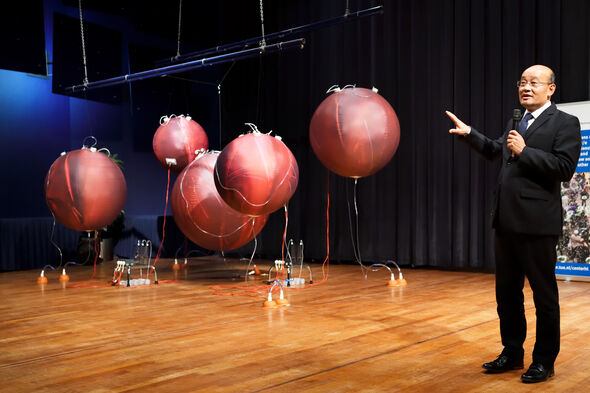
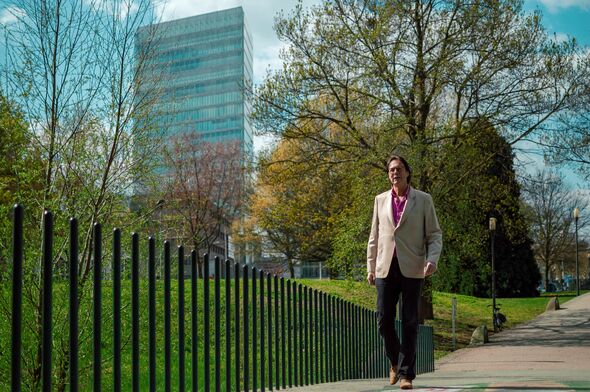
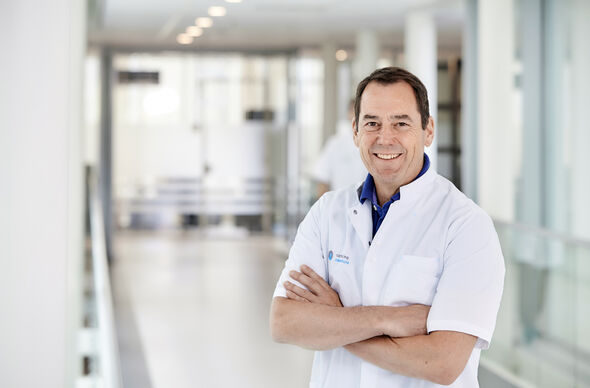
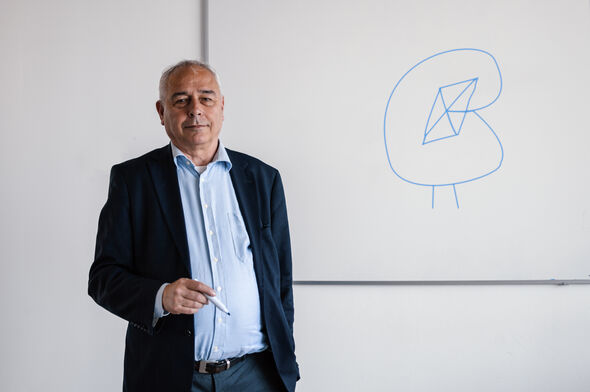
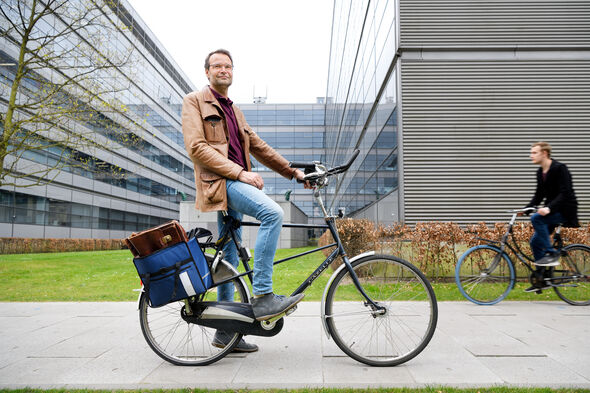
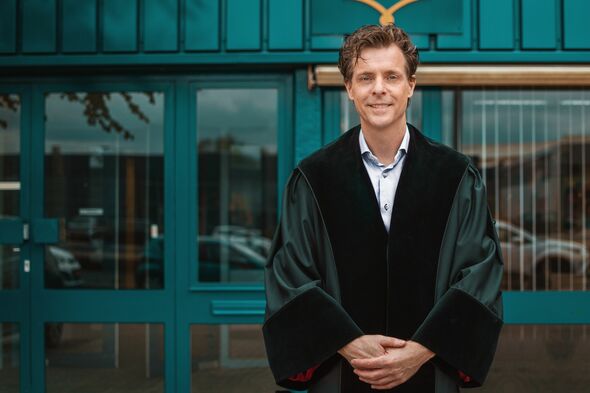
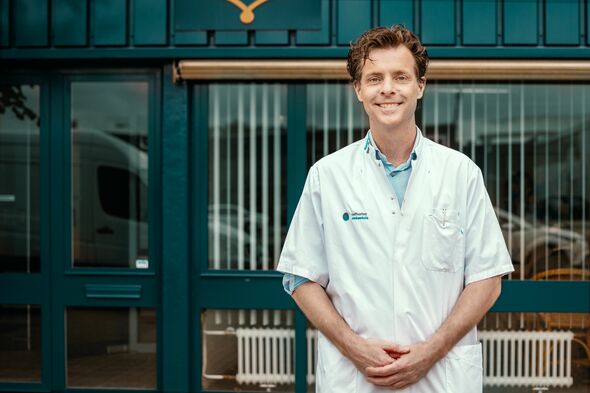
Discussion